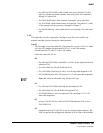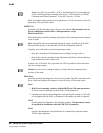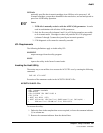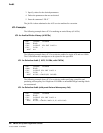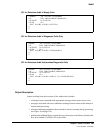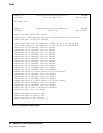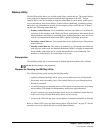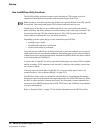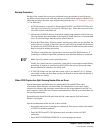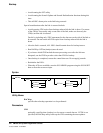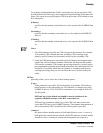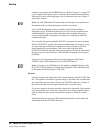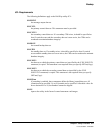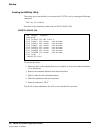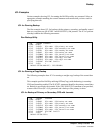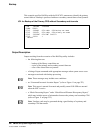
Chapter 4. Utility Functions 213
1st ed., 6/30/04 - 312579601
Backup Procedure
Backup of the control data set may be performed using conventions for specifying the
secondary control data set and with copy data sets to enable block analysis, if desired. The
following procedure describes steps for performing backups (see “JCL Examples” on page
247 for each step).
1. If OPTion(Analyze) is specified, allocate the SLSCOPY1 and SLSCOPY2 data sets.
This step is not necessary if you specify OPTion(Copy). These data sets must be the
size of the current control data set.
2. Allocate the SLSBKUP data set. It should be slightly larger than the control data sets.
The size depends upon the number of discrepancies found. However, a recommended
size is five percent larger than the current control data set.
3. Run the BACKup utility. If backup options requiring copy data sets are specified, the
control data set’s volume is placed in a reserve state only long enough for the data to
be copied to the SLSCOPYn data sets. The resident-host cannot access either control
data set except for backup processing.
The library control data set is backed-up to the user-specified DASD data set. If
journaling is enabled, all specified journals are reset when the backup is completed.
Note: Up to 99 journals can be specified per run.
Finally, the control data set is returned to a state where it can support normal library
processing. If Analyze is specified, the SLSCOPYn data sets are processed using
unreserved READs; otherwise, the utility ends.
4. If SLSCOPYn data sets are used and a return code of less than RC=8 (i.e., backup
successful) is achieved, these data sets may be deleted or reused when the backup is
restarted due to a failure.
When CDS Copies Are Split Among Hosts After an Error
Special precautions should be taken for running BACKup and RESTore when
local/remote-linked libraries run control data sets independent of each other. In this
situation, the primary and secondary control data sets are being updated by the HSC on
their respective sides of the link. If remote communication is lost, the two control data sets
become unsynchronized.
Precautions also should be followed when the link connecting the local and remote
libraries is disrupted.
Special considerations while the link is down include:
• Keep enters and ejects of cartridges to a minimum. This practice reduces the number
of AUDIT statements produced.
• Enter MNTD Float(OFf). This generates more pass-thrus, but less AUDIT
statements.
• Enter MNTD SCRDISM(CURRENT) to avoid cartridge movement.
Backup



